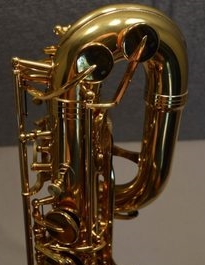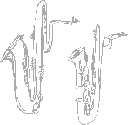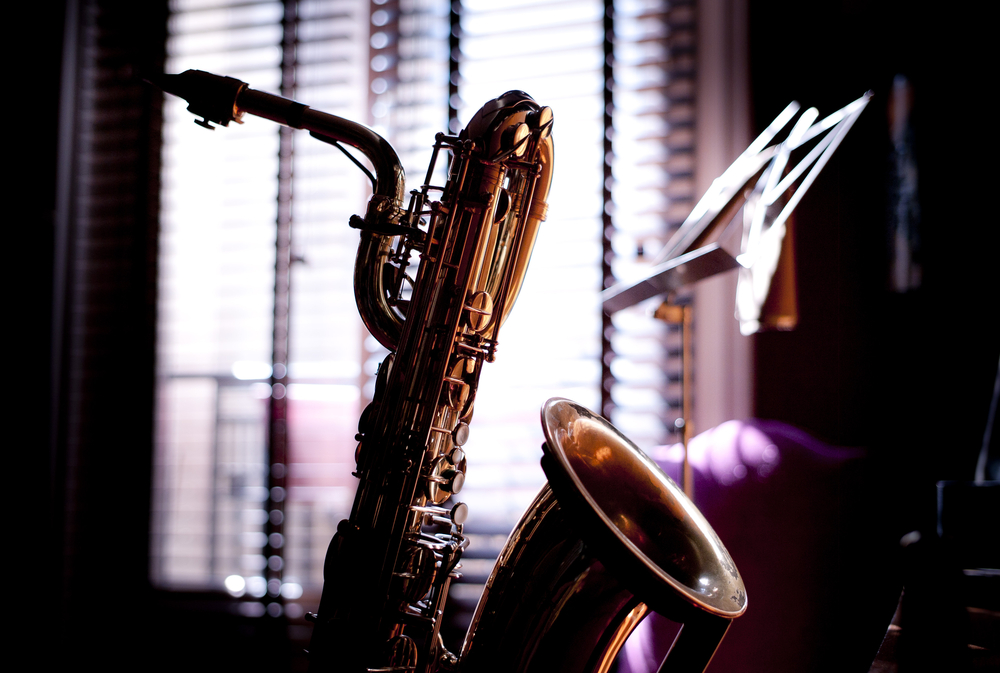 Whether you are new to the baritone saxophone or just discovered its sound is your voice and want to play one we can all use a bit of advice when it comes time to pick our axe. The same advice given for choosing the smaller horns apply to the baritone with a few exceptions and baritone specific constraints. In the end choosing the right baritone for each player will be a matter of personal taste but with a bit of guidance you can be confident in the choice you are making.
Whether you are new to the baritone saxophone or just discovered its sound is your voice and want to play one we can all use a bit of advice when it comes time to pick our axe. The same advice given for choosing the smaller horns apply to the baritone with a few exceptions and baritone specific constraints. In the end choosing the right baritone for each player will be a matter of personal taste but with a bit of guidance you can be confident in the choice you are making.
What kind of music do you want to play?
The baritone is a versatile horn though not used in all genres it can be push to play in almost any musical setting. What makes this question important is that some genres of music make use of the Low-A note that nearly all modern baritones are built down to. This Low-A is the a C2 on the piano. This is a heavily used note in big band arrangements after the 1950’s. You will sometimes find the bari doubling for or adding warmth and buzz to bass trombone lines. Funk, pop, gospel, and just about everything other than classical music will call on the bari to play that Low-A.
Low-A vs Low-Bb debate
There have been many claims that adding a Low-A changed the baritone and that a true bari only goes down to Low-Bb. The baritone great Joe Temperley has on more than one occasion stated he felt the Low-Bb horns had a better sound. He wasn’t the only person to make such claims in the musical world. It’s the MBS blog opinion that the build quality and design of the horn that makes more a difference in tone than the presences of a low-A tone hole. With that said, if you are used to doing overtone exercises on the smaller horns you will find that the overtones on the low-A horns feel very different. The overtones feel identical on Low-Bb baris as they do on all the other saxes. It shouldn’t be not a deal breaker. So enter your bari search with an open mind.
Vintage vs New
Vintage horns can be a great value for the player who wants a quality horn but does not want to buy a new horn, can’t afford it, or thinks the vintage horn has something modern ones don’t. There are dozens of brands of horns from yesteryear and each has a fanatical following promising players that their particular brand and models are the finest example of the baritone sax ever made. Some players will buy anything with a particular brand name on the bell. But even those sought after brands and models can have serious play-ability issues.
Vintage horns can have difficult ergonomics to get used to. things like spread finger touches, flat side keys, low or high palm keys, inline tone holes, and pinky tables that are far from the other touches can make for a difficult horn to play well. It’s been stated on more than one forum that the player has to ‘get used to the horn’. Getting used to poor ergonomics is not a wise choice if the player wants to remain injury free. Especially young players still developing their technique. Instead, playing and testing a vintage horn for comfort and fit to your individual anatomy is a much better.
Newer horns benefit from decades of refinement and a better understanding of ergonomics that wasn’t really considered before the late 50’s. Most newer saxophones have ergonomics based loosely or specifically on Selmer, Yamaha, or Keilwerth keywork layout. These setups are similar and have proven the test of time. Nearly any person will find horns with these setups to have a more comfortable feel under the fingers and in some cases a more balanced feel on the strap or harness. Where some players complain is the tone and robustness of the construction. With some players claiming that modern horns have a tone that lacks soul or heart. Sterile or uniform is anther description used for some modern horns. This is rather subjective so take comments like those with a grain of salt.
East Asian, North American, or European?
In the last 20 years horns from China, Taiwan, and now Vietnam and India have entered the marketplace. At first these horns were suitable only for students and in some cases not even that. These horns were at the time poor copies of name brand horn. Many still are copies but the quality of these copies has improved. This negative impression continues in the minds of many players, especially those who haven’t played a modern Taiwanese horn. Horns from Taiwan like P. Mauriat are quality instruments worthy of consideration. Many European makers are manufacturing their student line horns in Chinese factories. Conn-Selmer produces it’s Prelude line in Mainland China. As does Yamaha with the Advantage line. These are good quality horns that will serve their student players great and prepare them to move to a more feature rich model as their skills improve. I recommend not discounting the Asian import horns just because of their country of origin.
Buy online or in person
This is a hard topic for me as a full 90% of my baritone saxes and gear was purchased online and 100% of my clarinets. My flutes, piccolo and 2 of my saxes were purchased locally from local shops or other players. With that caveat out of the way i support both methods of purchase. The online marketplace opens the buyer to horns they couldn’t see any other way though you can never be sure of what you’ll receive or how it will play until you’ve committed to the purchase.
For example, I’ve played a Selmer Mk6 alto that as a real dog of a horn that was purchased online mostly due to the name and once sold was non-returnable. It was not the finest example of the Selmer brand due to some intonation issues that made playing it a chore. The owner of the horn lamented the purchase and said if he’d played it first he most likely wouldn’t have purchased it. The pressure from other players, the brand name and mystique all contributed to him making this purchase. He later put it back on ebay and made his money back. He ended up with a killer Super 20 from a local shop that he won’t part with short of death.
Buying from a local shop generally means you’ll pay more for the same horn. The shop keeper has overhead and the local market determines the prices. Where you pay more initially I believe the initial cost of ownership is lower as most shops offer a limited warranty even on used horns and many offer a limited service contract. My local sax shop offers a year warranty and very reasonable prices on cleaning and tuneups. This peace of mind is not something you get from most online purchases. I recommend that players start locally or at least consult with a local trusted shop keeper for advice even on a online purchase. My tech has warned me away from bad online purchases that I thought were good deals but his trained eyes explained the real estimated repair costs.
Buying Basics:
- Set a Budget before you begin looking.
- Choose either Low-A or Low-Bb (hint: Low A will be more versatile in today’s musical landscape)
- Choose Vintage (Pre 1970’s) or Modern (1970’s to Present)
- Consider being brand agnostic to open your opportunities
- Contact your local repair shop or independent retailer for their inventory
- If buying locally play the horn for an hour or more. Let it warm up and settle in your hands.
- Bring your mouthpiece, reeds, and neck strap/harness with you when you play test.
- If buying online, negotiate a return policy before completing the transaction
- Request images of the package pre-shipping and take images of the box immediate on arrival. Documenting condition of the packaging is critical to damage claims and can give repair techs a clue to how a damaged horn was treated in the box
- Once you buy the horn play it, play it, play it.

